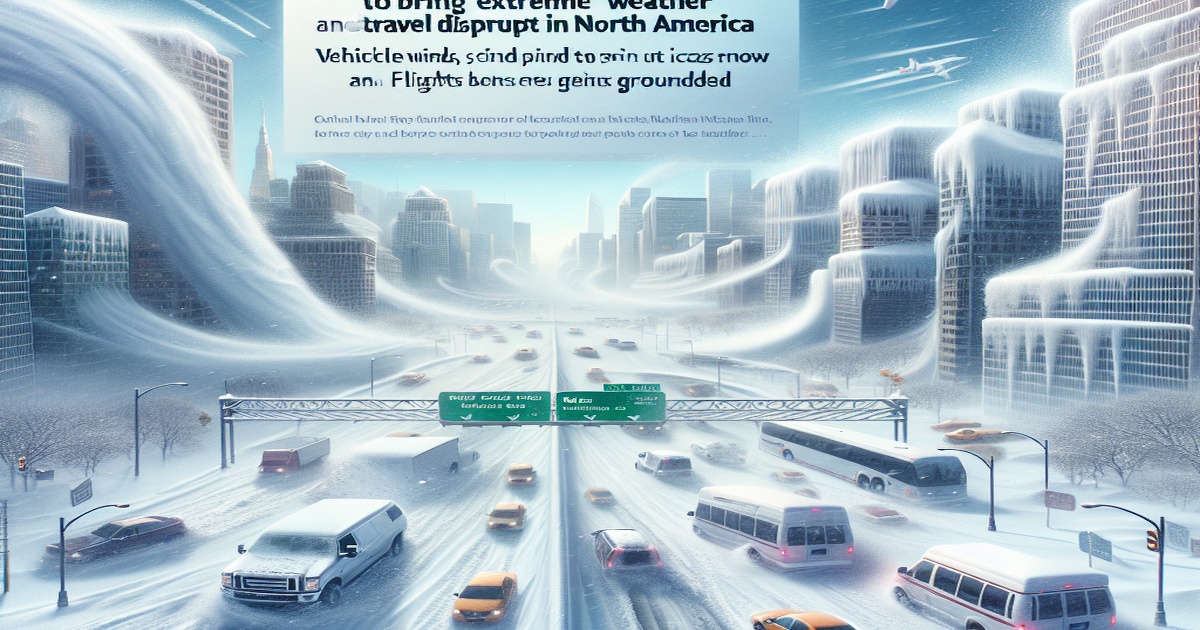A Polar Vortex Collapse is Expected to Bring Extreme Winter Weather
Get ready for another round of extreme winter weather. A polar vortex collapse is expected to occur over the next two weeks, bringing severe cold temperatures and travel disruptions across North America. This weather phenomenon is expected to develop in mid-March, impacting parts of Canada and the United States. It may also affect the UK and Europe.
A polar vortex collapse occurs when the layer between 10 and 50km above Earth's surface warms up to 50 degrees in just two days, known as sudden stratospheric warming (SSW). This warming weakens the polar vortex, causing cold Arctic air to move southwards and leading to extreme weather conditions.
This will be the second polar vortex collapse in 2025. The previous collapse in February caused deep freezes and travel havoc across North America, impacting millions of Americans and the majority of the country with snow, storms, and sub-zero temperatures.
The upcoming vortex disruption may weaken the jet stream, releasing cold air from polar regions into North America or Eurasia. "We are predicting a displacement of the polar vortex on the Europe and eastern Canada side of the polar," AccuWeather's Lead Meteorologist Paul Pastelok told The Independent. "When the Polar Vortex is disrupted - whether stretched, displaced, or split - it can, but does not always, impact this polar jet stream."
The timing for North America is uncertain, but a change in the pattern could occur in late March into early April. A polar vortex is a large area of low pressure and cold air that rotates around the North and South poles of the Earth. It corresponds with the narrow bands of wind 8 to 11 kilometres above Earth's surface, known as the jet stream.
When the vortex is weakened, the jet stream can become less stable, allowing cold polar air to spill southward, leading to extreme and unpredictable weather. Mr. Pastelok explained that there is a small chance of a "complete split" in the jet stream pattern, which could last four to seven weeks. However, a "displacement" or a change in the pattern is more likely. Such a change would last less time and would affect Europe and central and eastern North America.
The weather event may also impact the UK, with forecasters warning that temperatures could drop again after a temporary reprieve this week. "SSWs don't always impact our weather but if they do it can take a few weeks before impacts might be felt on the earth surface," the UK Met Office told the Independent, adding that the warming is so high up that we don't feel it directly. "If this happens this would act as a factor in favouring blocked/slowly evolving patterns for the remainder of March and could bring colder weather to the UK.







9 Comments
ZmeeLove
Convenient timing to justify increased taxes and climate policies.
The Truth
Better preparedness due to accurate scientific forecasts helps reduce potential harm. Thanks for sharing!
Martin L King
Sounds like they're trying to frighten us into staying home. No thank you.
G P Floyd Jr
Let me guess—this 'extreme' event will be followed by another ‘once-in-a-lifetime’ warning next year.
Leonardo
If this polar vortex disruption is anything like the last one, preparation will make a huge difference.
Habibi
Just live your life; stop letting the media scare you over normal seasonal weather changes.
Muchacho
How often do these guys get their predictions wrong? I'll believe it when I see it.
Coccinella
Seems like meteorologists struggle to get short-term forecasts right, but they think they can predict events weeks in advance?
Bella Ciao
Every winter has cold snaps—calling it a polar vortex collapse is sensationalizing.